The water diplomats

The Gift
Alfredo Granados Olivas has a farm in Chihuahua, Mexico, about a 30-minute drive south of the border with New Mexico.
When we visited, he was sitting at the head of a kitchen table on that farm. He’d gathered about 20 people–researchers, students and family members–to share pork, rice and beans that his wife made.
The area around his house is mostly farmland, though that’s becoming less and less true.
“That’s because a lot of the fields are abandoned,” Granados said. “They don’t have vegetation. Natural vegetation has gone already because they pull them out to put in the crops.”
The water that was under our feet at his farm is shared with his community–small farmers with limited resources and big companies alike. It also crosses the border.
And it’s getting smaller. Granados’s colleague Rafael Corral-Díaz said the ongoing drought is putting pressure on this resource that is regulated in different ways by different governments.
“We know one thing for sure–traditional agriculture is not solving the problem right now,” Corral-Díaz said. “So that's why people are abandoning places–because they don't have the resources. They require a lot of water to produce a pound of food for example, or a pound of meat.”
Granados said the best way to manage the source is for everyone to use less of it. So he works with the people around the table to bring AI, drones and other tech to the edge of the Chihuahuan Desert and keep the farmers there afloat.
But they’re still working on convincing the farmers their techniques work and big investors and collaborators that this is the future of keeping fresh produce on the grocery shelves.
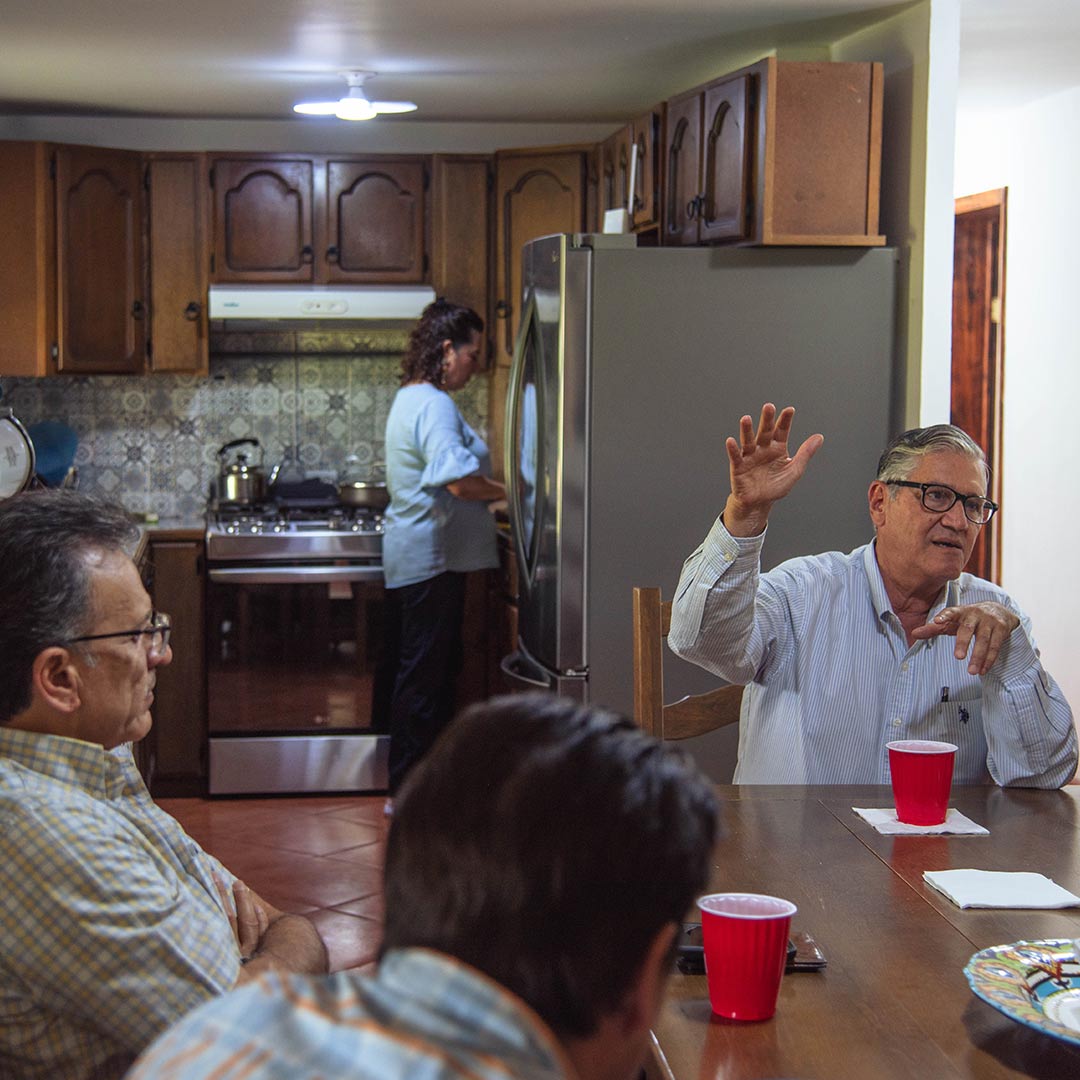 VIEW LARGER In the kitchen at Rancho El Regalo, Granados tells the ranch’s origin story while his wife, Teresa, makes lunch in the background.
VIEW LARGER In the kitchen at Rancho El Regalo, Granados tells the ranch’s origin story while his wife, Teresa, makes lunch in the background.  VIEW LARGER Granados explains some of the technology that his research team uses on the ranch, including drones and tools for measuring water level, pressure, conductivity and nutrient deficiency. Some tools can be prohibitively expensive for farmers, so Granados’ team is exploring how they can make their own.
VIEW LARGER Granados explains some of the technology that his research team uses on the ranch, including drones and tools for measuring water level, pressure, conductivity and nutrient deficiency. Some tools can be prohibitively expensive for farmers, so Granados’ team is exploring how they can make their own.
The water source that Granados draws from is called a transboundary aquifer, or groundwater that is shared across a border.
Groundwater doesn’t pay attention to political boundaries, so a whole lot of people can be all pulling from the same aquifer without having a good strategy for not using it up too fast. That’s happening all over the world, including in Arizona and Texas.
Granados’s farm is in Chihuahua, a couple hours away from El Paso and Juarez.
We drove down along the border wall and crossed about a half hour north of the farm.
It was a dusty ride down, but once we got to the farm itself, it was pretty green. There was a pond where carp would soon be swimming, and all these rows of little baby pecan trees. You could see mountains in just about any direction.
Granados owns the farm and is a longtime professor at the Universidad Autónoma de Ciudad Juárez. He said he knew he wanted to be on a farm as a kid.
“But my parents didn't have any land for me,” he said.
He went to school to be an agricultural engineer. He thought he’d get onto a farm that way, and people had told him it was a solid career choice.
That was until the oil crisis in Mexico began in the early eighties, right as he was finishing college and starting his career.
He traveled around looking for work and found nothing.
“So I came back defeated from that field trip. I drink a lot of beer with my friends. I can tell you that.”
He found a job at an air conditioning repair shop and did that for a while. It wasn’t farming, but it paid the bills. His boss there pushed him to try again, and he went back to school. He found a scholarship for a masters program in groundwater hydrology and got it.
Not long after, he married his wife, who grew up on the farm next to where we met him, and began to put his two degrees to work on his in-laws’ irrigation system.
And next door, they had a neighbor who’d made a lot of money in the U.S. and bought a farm. Granados made friends with him and would go see him after work.
“I came in and he was waiting with a cup of coffee,” he said.
Granados said the neighbor, despite resistance from his family, abandoned the farm and gave it over to Granados. He named the farm El Regalo–the gift.
We visited Granados’ pumphouse, where he has a relatively new, efficient, electric pump.
Things have changed over the 30-plus years he’s been here. It’s gotten dryer. Big operations on both sides of the border have spent a lot of money drilling deep.
“The new corporations are coming in here. They bring their big, brand new drilling rigs. And they can go as deep as 350 meters, and then you will hit the regional aquifer,” he said.
That’s over a thousand feet. When they go deeper than the smaller farmers here and over pump, the smaller farmers’ wells go dry, so they can’t farm anything.
Granados said that sends many people — climate refugees — over the border, looking for work.
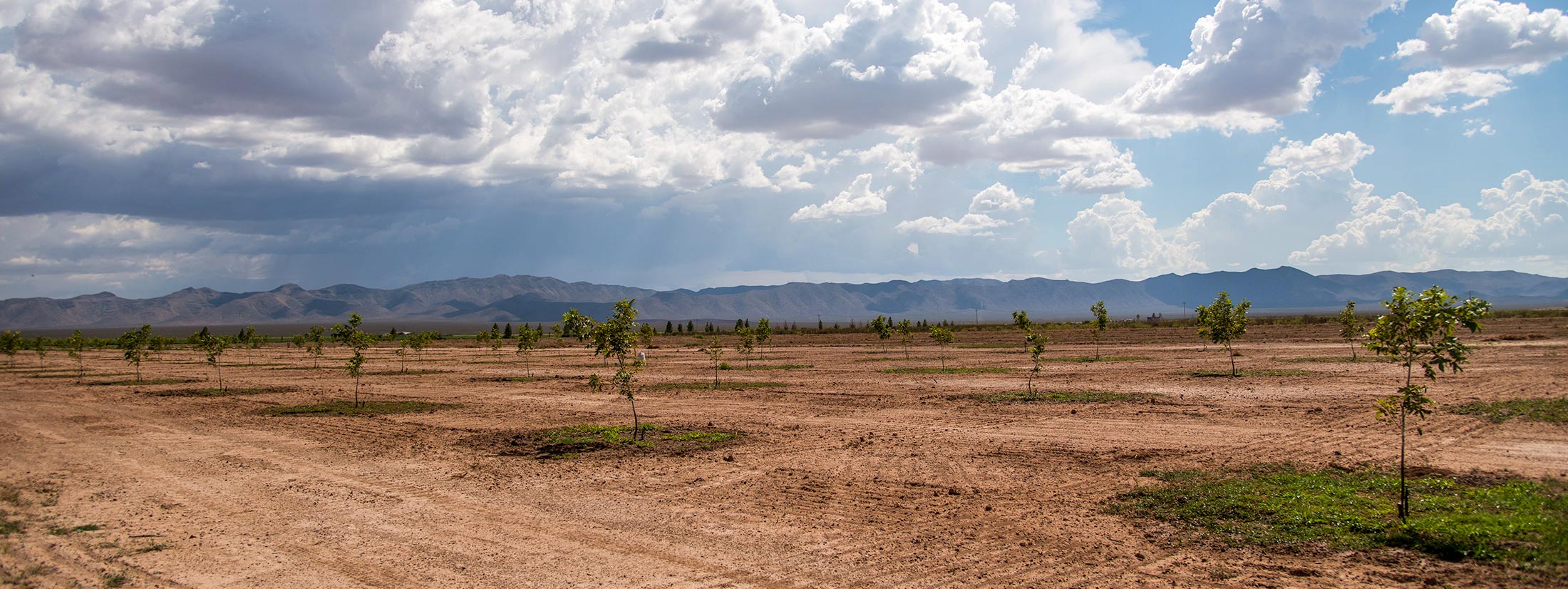 Rancho El Regalo’s young pecan trees, each surrounded by a perfect circle of grass from the irrigation, stretch out towards Sierra Boca Grande. The crisscrossed lines in the soil help keep water where it’s needed.
Rancho El Regalo’s young pecan trees, each surrounded by a perfect circle of grass from the irrigation, stretch out towards Sierra Boca Grande. The crisscrossed lines in the soil help keep water where it’s needed.
Granados is a full-time researcher, and this farm, ultimately, is a research center. He’s trying to keep small farmers here by giving them tools, services and knowledge that will help them use less water.
So this farm is a proving ground as well as a place to show farmers those new techniques and technology, such as in the pecan grove just outside the pumphouse, where the dirt had a criss-cross pattern laid into it.
“What we do is run straight lines like that, and straight lines like north, south, east, west, as close as possible to the tree,” he said. That keeps precipitation on his field, which is sloped, but doesn’t stop the necessary runoff.
The trees there were young, and each had a perfect circle of wet dirt around it, which made a polka-dotted pattern on the field.
“That's exactly where I want, and this irrigation started at 7pm last night. I can shut it down right now because I went all the way to 45 centimeters. So 12 hours of irrigation. That's enough for me in this field,” Granados said.
Farmers here would normally flood irrigate a pecan grove like this, but he injects the water directly where the trees need it, and does it at a time when the heat and sun won’t burn it off.
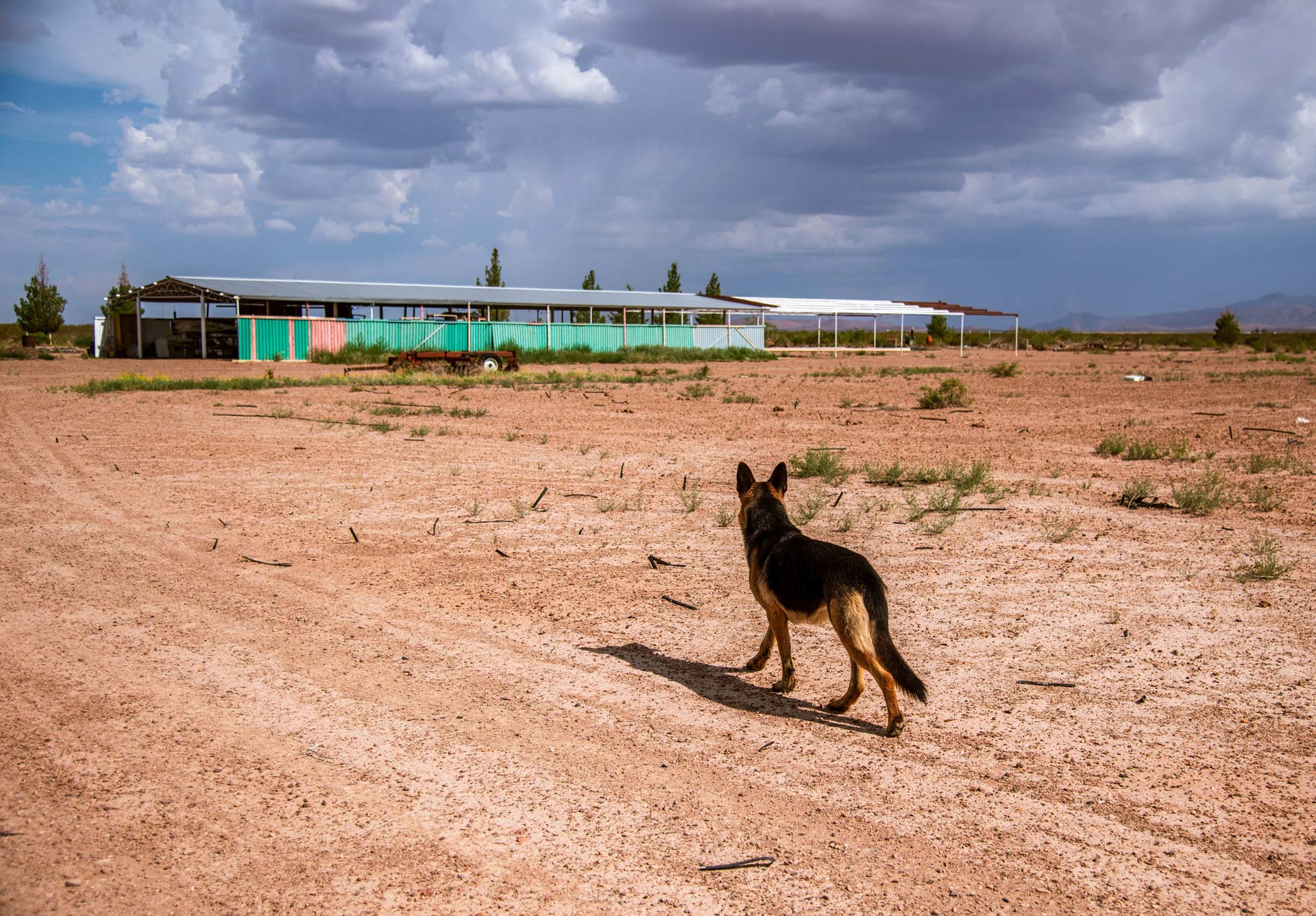 VIEW LARGER Granados’ beloved dog Thor — named for the Norse god of agriculture and thunder — heads towards the vermicompost area of the ranch. There, Granados’ California red worms create the compost he uses to augment the soil.
VIEW LARGER Granados’ beloved dog Thor — named for the Norse god of agriculture and thunder — heads towards the vermicompost area of the ranch. There, Granados’ California red worms create the compost he uses to augment the soil. He also has a team of researchers and students, the ones he gathered at the kitchen table. He works with them to bring new technology to farms in the area. One of their main goals is putting tech in reach of farmers by making it affordable.
For example, he brought on a student who flies a drone that collects crop data. That student works on breaking down the drone so he can learn how it works and make his own. The new one will be tailored to the needs of these farmers, and it will be cheaper because cost is a huge barrier to using these here.
“It's not the idea that each farmer has to buy a drone because it is not efficient,” he said. “But it's the idea to form five, six students that are experts.”
Those students could work with the farmers, and Granados said the students can provide another service that other drone operators here don’t. They analyze the information before handing it over, so farmers know what they’re looking at.
Still, he said he’s looking for more support from investors, involvement from researchers and help from the government to make this a more serviceable project.
“We wish we had the government here investing money in these types of projects, or to reduce the cost of electricity [with] some programs they used to have in the past, but we haven't had that,” he said.
Aquifers and the border
So what is an aquifer–the water under Granados’s farm that spans across the border?
It works like a sponge.
“It can be different types of sponge,” Rosario Sanchez said. She researches transboundary water issues at the Texas Water Resources Institute.
“That holds water to be used in the future, or in the present. And it's been stored there for either a couple of years, hundreds of years, or millions of years. It depends on the sponge and the type of sponge.”
The border between the U.S. and Mexico crosses over many aquifers, just like it cuts across rivers, basins and communities, and there’s no one approach to dealing with it.
Mexico manages water at the federal level, but the U.S. mostly leaves it to individual states to regulate.
And even within the states, you might have areas where it’s handled differently from others, like Arizona, where some communities have well-defined rules about who can drill water, and some have virtually none.
“It's very localized. It's attached to the community because of the geography and how groundwater behaves. So really, at the federal or macro level, it's hard to have communication on groundwater,” Sanchez said.
There are other factors that can decide how much people work across the border on this. If there are densely populated areas next to each other on the border, that means they’re more likely to communicate.
And some places stand out as having more success with that, like Arizona and Sonora.
“They have a history of communication, of collaboration and [many] other topics besides water,” Sanchez said.
The Arizona-Mexico Commission is a partnership between the two that’s worked together on trade, tourism and environmental issues for decades. But that’s unique to there.
“You cannot translate that same level of effectiveness or success to Mexico and Texas, for example. I assume that because there's a totally different history between Texas. We had a war. We cannot get over it. There is resentment,” she said.
That can even vary from place to place along the Texas-Mexico border.
Whatever the feelings, people on both sides of the line agree that the water stored underground is a safer bet than what’s at the top.
“Population is growing, and surface water is declining through climate change,” Sanchez said.
And when you’re sharing a resource so vital to life, income and survival, it’s bound to seep into other issues.
“Issues of immigration, issues of national security come into place,” Sanchez said. “Issues of sovereignty, issue of international water law, and all those principles that govern the relationships between countries have a say on this.”
Sharing information
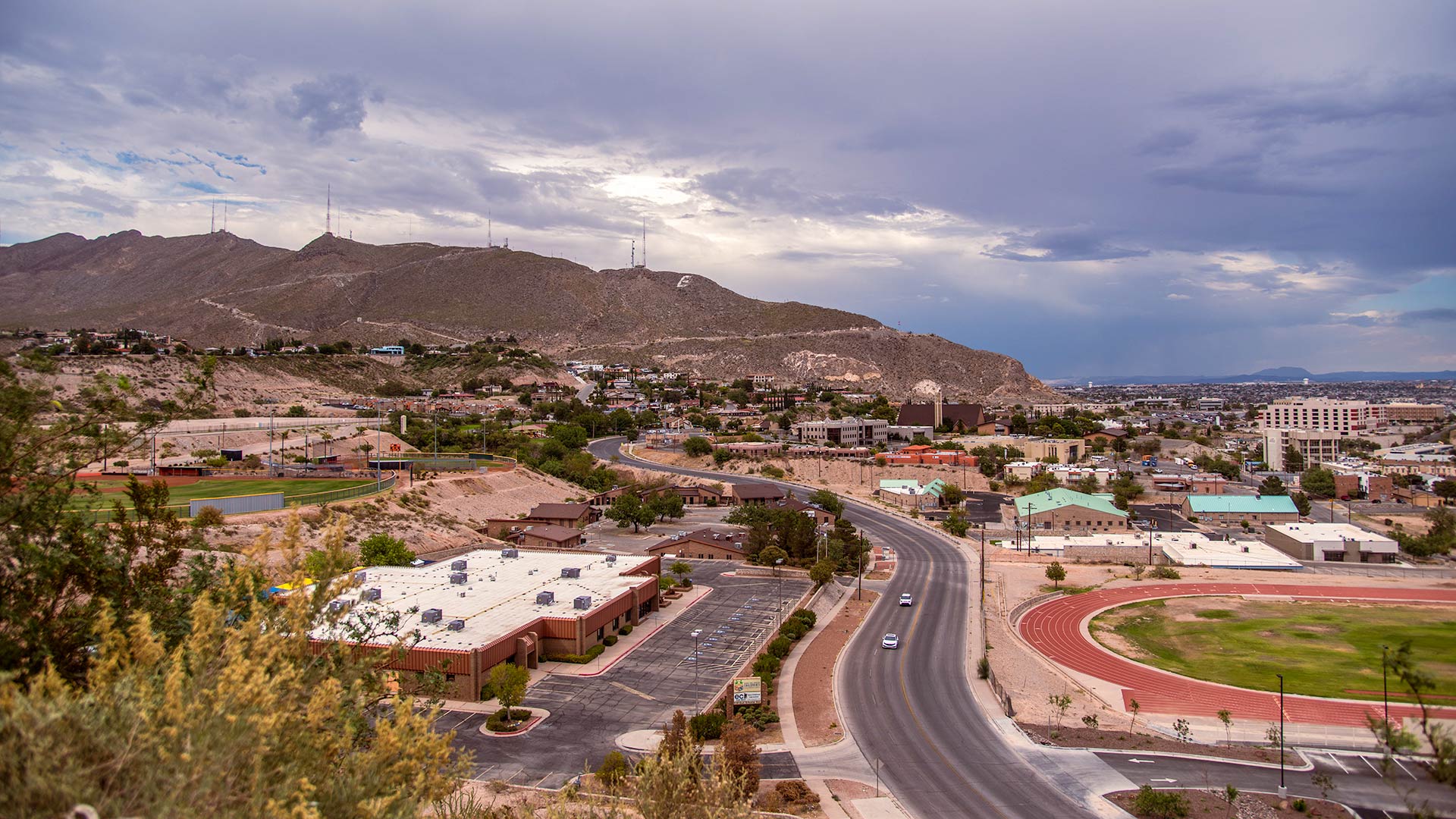 VIEW LARGER The Franklin Mountains run through the middle of El Paso, Texas. The mountains form the border between aquifers: the Hueco Bolson is on one side and the Mesilla Bolson is on the other. Both aquifers are also shared with New Mexico and Mexico.
VIEW LARGER The Franklin Mountains run through the middle of El Paso, Texas. The mountains form the border between aquifers: the Hueco Bolson is on one side and the Mesilla Bolson is on the other. Both aquifers are also shared with New Mexico and Mexico. Scott Reinert is the water resources manager at El Paso Water Utilities.
“We have mountains surrounding us,” he said while driving through the city. “The Franklin Mountains run right through the center of El Paso, it's kind of like a spine of El Paso.
“I like to tell people anytime you see mountains, those are the edges of our aquifers. And in between the mountains, you have the sand, silts, and clays for 1000s of feet. And that's where our aquifers are.”
El Paso has nearly 700,000 people, and Juarez has over twice that. That means they both pump a lot of water from the Hueco Bolson aquifer, and pumping water at a well pulls more water towards the well.
“As the city grows, we can't simply pump the Hueco more and more and more, and that's what we're doing in the 60s, 70s and 80s. That was our only strategy,” Reinert said.
They had to find a broader variety of sources–not just the same wells.
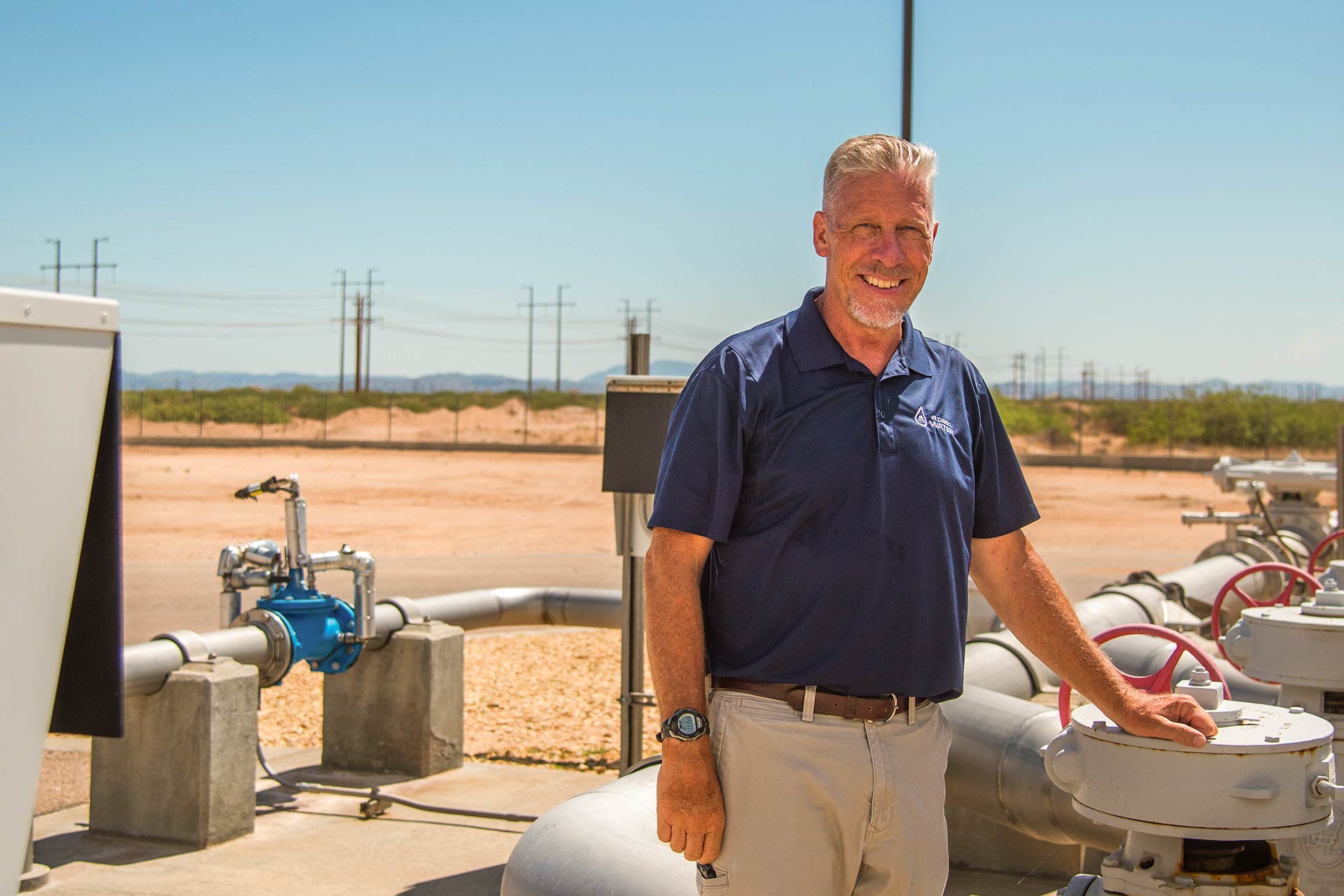 VIEW LARGER Scott Reinert, El Paso Water Utilities water resources manager, shows the concentrate pumping station at El Paso’s Kay Bailey Hutchison Desalination Plant. After the brackish groundwater is desalinated, the super-salty concentrate is pumped 22 miles away, where it is injected into a deep geological formation that is hydrogeologically separated from the drinking water supply.
VIEW LARGER Scott Reinert, El Paso Water Utilities water resources manager, shows the concentrate pumping station at El Paso’s Kay Bailey Hutchison Desalination Plant. After the brackish groundwater is desalinated, the super-salty concentrate is pumped 22 miles away, where it is injected into a deep geological formation that is hydrogeologically separated from the drinking water supply. Part of the diversified portfolio is river water, and part of it is desalinated water from the salty edges of the aquifer. El Paso also uses reclaimed wastewater that’s been treated up to irrigation standards. And in the future, they'll also be using what’s called purified water, or wastewater that’s been treated all the way up to drinking water standards.
Reinert said for him, good communication over the border is better than more regulation on how to share the water.
“They have smart people on their side of the border, and we have smart people here,” he said. “They're smart enough to do what needs to be done to make it sustainable.”
He said one of the best tools they’ve had for doing that is a data-sharing project. The U.S. Geological Survey made a model of the shared groundwater here with the help of El Paso, Juarez and others. That model set off an international data-sharing relationship.
They still use it to share information across the border on pumping levels, new wells, water quality and more.
“I'd like to say that both countries felt very proud about the sharing of data, and we share technical ideas. We don't try to regulate or control what they do. But if they have questions about technical concepts, I think there is also good concept or technical sharing of ideas,” he said.
The data-sharing relationship is just that, data-sharing. They don’t co-manage the aquifers.
“I've always felt that if we want something from Mexico, they will give it to us provided that we share our data. It doesn't work when we ask them for their stuff, and we don't give them. So we try to, and I think both countries really respect that,” he said.
They’ve used it to pull off some big projects.
“I think the model played an important role in the building of our desalination plant. It helped us understand where the best location was strategically in the aquifer for brackish water, freshwater, movement of groundwater coming into town,” Reinert said.
He also said the data-sharing relationship is going to be vital for planning for the future, as both sides of the border will have to decide how to get enough water.
“The future of the Hueco Bolson and its management is more and more desalting. And Mexico doesn't desalt, not yet. But at some point, perhaps they will. I think Mexico has similar numbers — this much fresh, three times as much brackish. I just think that has to be at least in the dialogue for future water for both sides.”
Further west, there’s a pair of towns at the border between Arizona and Sonora with the same name: Nogales. Nogales, Sonora is an industrial city of a quarter of a million people, and Nogales, Arizona is a much quieter town of just 20,000.
Alejandro Barcenas is the public works director for the city of Nogales, a title he’s had for 10 years. Before that, he worked for the Arizona Department of Water Resources.
“We share the water with Mexico–different country, different regulations, different economic situation, different population,” he said.
They share the Santa Cruz Aquifer and the Santa Cruz River, which actually crosses into Mexico and then comes back.
He said the aquifers here are dependent on the rains and flooding of the river, and they’re shallow — much shallower than Tucson, for example.
They also share a wash with Nogales, Sonora that brings trash and contaminants over when a big rain comes. When that happens, Barcenas and his team reach directly out to their counterparts over the border.
“[It’s] almost on a daily basis that we notify them. We see this is coming in and they try to address that as soon as possible,” he said. “And the real issue is the communication. We're not supposed to have direct communication with a foreign country.”
Arizona and Sonora might have some of the strongest communication along the border, but it can still feel a little too bureaucratic when there’s an emergency playing out that requires people on both sides of the border to move fast.
Even when things aren’t urgent, he said it can be hard to go through the normal channels with the federal government when necessary.
“We're a small fish in this situation. So that's why probably the attention that we're going to receive at the federal level is going to be totally different than the attention that El Paso or San Diego, or that area, San Diego–Tijuana area,” he said.
The size difference between Nogales, Arizona and Nogales, Sonora also matters. Nogales, Sonora is a much more industrial town, so a lot of industrial metals come over from Mexico, and the federal Environmental Protection Agency and the Arizona Department of Environmental Quality requires Nogales, Arizona to clean them up.
It’s not cheap to do that. The city, and therefore the taxpayers, have to pay for it.
“We're not against that. We are for protecting the environment. But also we're put in a situation that normally no city of this size will have to go through,” Barcenas said.
Another defining feature of the city is that the commercial area butts up right against the border wall, and Border Patrol has a large presence.
He says Border Patrol put in grates to prevent people from crossing through the wash a few years ago.
“Well, those grates were supposed to open when the big, flood event came. That didn't happen. So they created a dam underground and created a big flood in Mexico,” he said. “And that flood crossed the border and created a big flood on this side of the border too.”
The town gets a lot of traffic during the day, too. About 30,000 to 40,000 people cross the border every day. Not all of them stay, but a significant number do.
“That's a blessing and a curse to us. We get business–we get people to buy stuff here. That's a blessing. But also on the water consumption, there are people that come and do laundry here, they come and go to the carwash because the [water situation] in Mexico is thoroughly different.
Water’s more reliable on the Arizona side, so they ultimately provide even drinking water to people who live just over the border.”
No one we spoke to said both countries’ governments co-regulating transboundary aquifers is likely any time soon. And not everyone even agreed that it would be a good solution.
But they did say the future will look like what’s already happening, but more so–scientists talking with each other, community leaders and utilities talking with each other and everyone else keeping those conversations running too.
“That's why this science diplomacy trend or concept is gaining more traction,” said Sanchez. “It's not enough that you are a scientist. You need to start communicating more efficiently to us, the diplomats or the decision makers to make things work on the other side.”
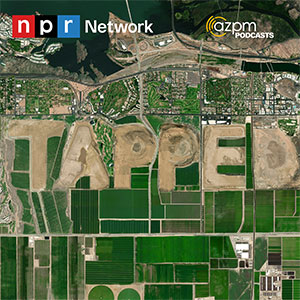





By submitting your comments, you hereby give AZPM the right to post your comments and potentially use them in any other form of media operated by this institution.